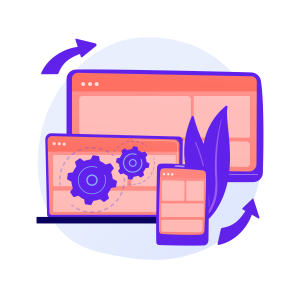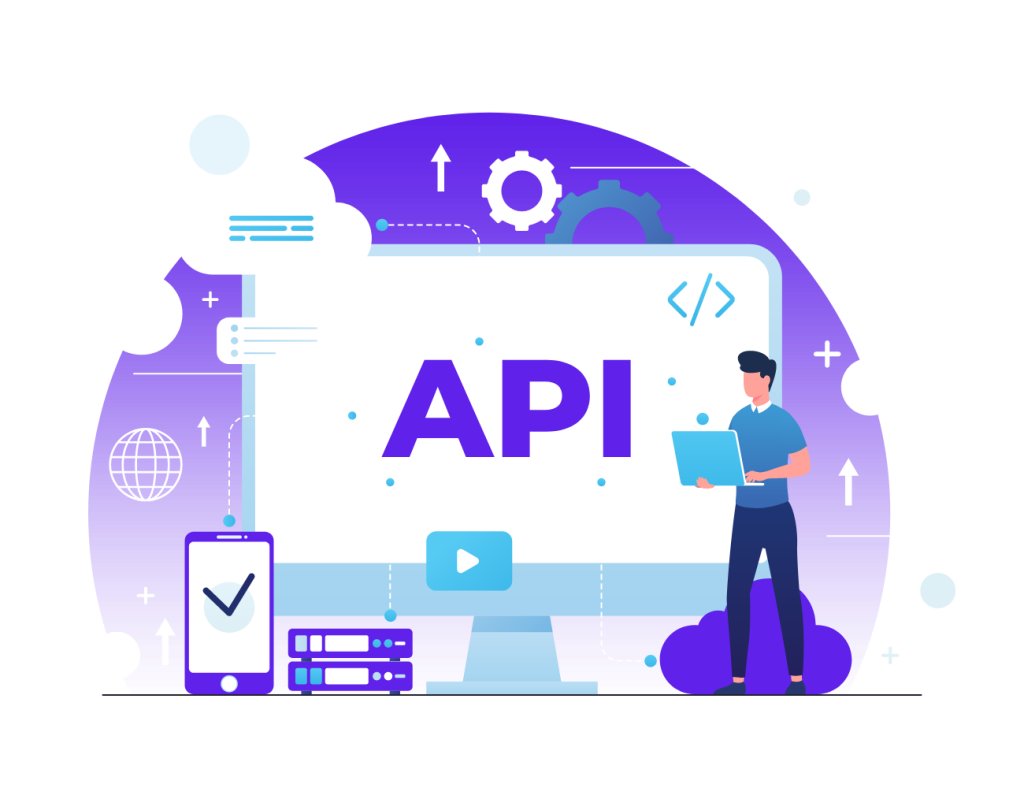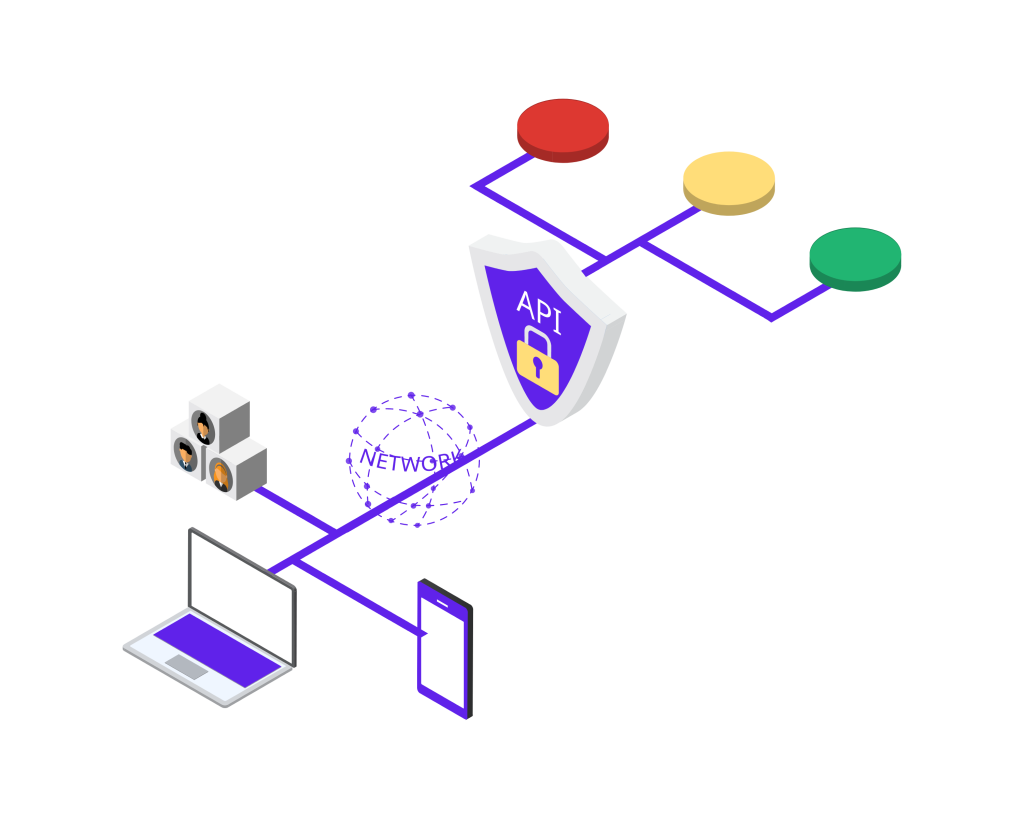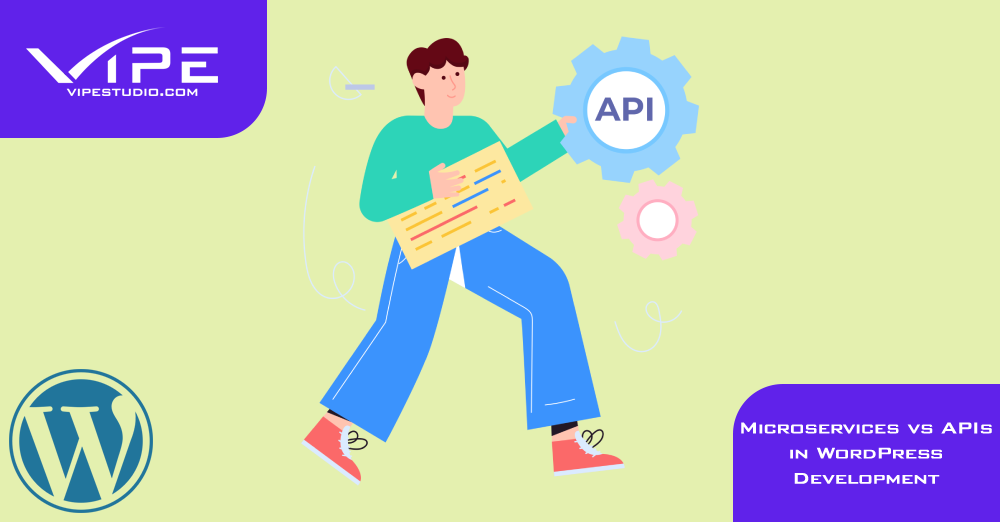14.10.2022
WordPress Development
Microservices vs APIs in WordPress Development
READING TIME: MIN
Table of Content
In this day and age, it’s like we are constantly surrounded by web terms – be it web development, programming languages, CMS, LMS, enterprise websites, frameworks, microservices vs APIs, you name it! In fact, things couldn’t be any different – today, more than ever, our lives are persistently evolving around the web environment.
Our Enterprise WordPress Agency for Development is no different – we are blessed to be fully engaged in the web, making sure we dedicate our time and effort to establishing dazzling WordPress-based platforms and software.
With time, experience and knowledge anyone can learn how to navigate through the world of the web. Luckily for everyone interested in the subject, nowadays there are plenty of resources that can easily educate us on any given topic, and microservices vs APIs make no exception.
We’ve often witnessed these two terms being used almost interchangeably, causing mass confusion among aspiring developers and newbie programmers. Are they both the same? Can a microservice be used instead of an API? Or are they more interconnected than we’ve ever thought?
In today’s article, our WordPress development agency is happy to introduce to our fellow readers a resourceful guide that closely examines microservices’ and APIs’ core, as well as focusing on the differences between the two. So, without any further ado, let’s get going!

In the Microservices vs APIs Match, Let’s Get Familiar With the Essence First
Our Enterprise WordPress Agency for Development is a fan of structured learning! Before we dive into the major differences between microservices and APIs, we’d like to begin right from the start. Let’s investigate what exactly microservices and APIs are so that anyone can get a better understanding of their functionalities.
So What Is a Microservice? Let’s Cover the Basics

Let’s say a developer wants to create an application.
Back in the day, when we mainly used desktop computers only, applications were meant for running on these types of devices. Applications, in general, were simpler with fewer functionalities and less traffic in terms of customers’ requests.
Thus, developers back then were preferably using the monolith architecture – a piece of software that was built in unity and was independent of any other applications or software. This traditional architectural approach dealt with creating one single code whose goal was to run all the commands based on the application.
Of course, there were numerous advantages when it came to the monolith architecture: it was easier to use in the very early stages of deployment, there was only one executable directory and developers found it easier to come across an issue of any sort since everything was monitored and deployed at once, to name a few.
But with time, as web development was rapidly improving, certain changes had to be made due to the monolith’s disadvantages: slower development in the late deployment stages, lack of scalability when it comes to individual components of the monolith, a single issue affecting the entire ecosystem, and lack of flexibility since the integration of new technologies were limited to the technologies already used in the monolith.
These days we are using more complex applications distributed on multiple devices. Also, there is a greater number of client requests while using a single application – for example, we have booking options, placing orders, payment options, as well as different payment methods, etc.
You get the picture. Our WordPress development agency clearly understands the need of taking a step further when it came to monolith architecture – the development community needed a new distribution model that enables an easier and more flexible deployment approach to a big and complex application.
And that’s how the microservices model was made! In a nutshell, a microservice is an architectural approach that breaks down an application into smaller services, and every one of each can be independently deployed, integrated, and maintained.
Of course, WordPress developers (as well as all developers, that is) can easily see how this new architectural model can boost efficiency and usage when we work on a single application. As a matter of fact, if you want to jump straight into the topic of Microservices and WordPress collaborations, we strongly advise you to check out our article on the subject right here.
Microservices offer some great advantages, as opposed to the monolith approach. They allow developers to:
- Build applications step-by-step, as well as improve, deploy, or debug a single service without affecting the entire microservice ecosystem.
- The developers can use the exact tools they desire since a microservice is not as rigid as the monolith.
- Services can be autonomously deployed at any given time without the need for pull requests that sometimes could take weeks, etc.
This is essential when we are dealing with huge applications or software that hosts multiple client requests while being distributed on various types of devices. Microservices save time, allow developers to upgrade and debug a single service every other day if needed, enable embracing new technologies and are characterized by autonomy at the production level.
With this being said, our WordPress development agency is certainly not stating that the monolith approach has nothing to offer – by no means! Surely, monolith architecture has its advantages, but it fails to deliver two crucial aspects of today’s web development world – scalability and flexibility. This alone explains pretty well why the microservices approach is continuously growing in power and is transforming into the most preferred method of application deployment.
All right, so far so good – after we’ve covered the basics in terms of microservices, let’s now focus our attention on the other aspect of today’s article. The API.
What Is an API and How It Correlates to the Microservice Architecture

API stands for Application Programming Interface. It is an integrated part of a web application (or software) and its main goal is to communicate with other applications.
In today’s web development climate APIs mainly serve as a bridge in B2B services. Our WordPress development agency is more than eager to show you what exactly this means with the help of a simple example.
Let’s say a potential customer enters an online store. After minutes (or even hours) of browsing and virtual shopping, they at last land their decision on a certain item. So far so good.
Now, it’s time for the customer to actually purchase the item. After they’ve added it to the shopping cart, they need to choose their preferred method of payment. The majority of online stores today offer payments via debit or credit cards. So let’s say the customer chooses this exact method.
By adding their card info, what happens is that the online store communicates directly with the customer’s bank, obtaining the information needed. On the other hand, the bank also communicates with the store, and after that, it sends a notification to the customer who needs to verify the transaction.
Another great example is the very act of the customer placing their order. While doing so, the online store’s API gathers the data from their action, sends it to the store’s server, and then returns a response back to the customer (whether the order was successful or not).
This amazing request route goes slightly unnoticed since it all happens so quickly. Before we know it, we’ve already paid for the desired item in less than a minute.
APIs can also be used when a website owner wants to better understand visitor behavior on the platform. The API can follow the visitor’s journey throughout the pages and determine where they stumble upon difficulties or obstacles of some sort. This great knowledge can showcase to the website developer which parts need improvement.
Our Enterprise WordPress Agency for Development is mesmerized by the effectiveness of API usage as much as you are – the online store’s and the bank’s software communicate directly with the API (which connects them), exchanging all the needed information, transaction amount, client request, authorization process, and payment finalization. The customer doesn’t even have to leave the online store’s page in order to visit the bank’s website.

But perhaps you’ve heard about some other API-related terms. Let’s dive into a very quick review:
- REST API – since the API is part of conceptual development, pretty much any developer (WordPress developers too!) can create their own API, based on the needs of an application in question. Of course, the majority of developers can use frameworks such as Representational State Transfer. APIs created using this framework are the most common and can be integrated to cooperate with multiple applications.
- External API – web APIs communicate with web servers and they can be used by pretty much everyone, even developers working on third-party applications.
- Internal API – internal APIs, on the other hand, are used for communication with a particular application, so they usually are restricted from open usage. Only authorized developers have full access. As a matter of fact, it’s the internal APIs we’d mainly focus our attention on in the next point.
Now that we’ve covered the essentials when it comes to microservices vs APIs, it’s about time we address the main matter in today’s article: What things in common do microservices and APIs have?
Microservices vs. APIs: The Best Partners in Crime?

At the beginning of the article, our WordPress development agency mentioned that more often than not, microservices and APIs are used interchangeably by people who are not familiar with the entire concept. Now we hope we’ve managed to unravel this myth – while microservices and APIs are indeed frequently used together, they do not represent the same thing. This doesn’t mean, however, that they do not share plenty of similarities.
Let’s Take a Glimpse at The Traits: Microservices vs APIs
- Both microservices and APIs shape today’s web development in terms of usage, scalability and flexibility
- They both improve an application’s security since an issue with a single service won’t lead to the whole microservice collapse
- They help with the reduction of obstacles, problems and web-related issues
- They accelerate development and deployment
And Now – Off to the Differences
We already know that a microservice is often divided into several services so that developers can work independently on a single service without affecting the entire microservice ecosystem. But within the microservice, how can we assure services communicate with each other correctly? Yes, you got it: by using APIs.
So imagine an application using an external API to communicate with another application. In terms of microservices, the services within the microservice use an internal API to communicate with each other.
A quick disclaimer, though: microservices are not alike, meaning that a certain internal API integration can vastly differ from another internal API integration used for another microservice. For instance, one of the most popular internal API integration methods uses one public service which communicates with the developer (they deploy, maintain, debug, etc.), having all other services privately communicate with each other only using their own APIs. There could be many different API utilization when it comes to microservices.
Microservices vs APIs? There’s Literally No Place for Rivalry
By far you are probably astonished by just how mesmerizing the web development world could be! Buckle up, that’s only the beginning!
Microservices and APIs indeed work together wonderfully – can you imagine what the future of the web would be if we couldn’t strongly rely on these two?
Our Enterprise WordPress Agency for Development is quick to share the great news – the microservices and their close connection to internal APIs won’t be leaving the building any time soon. In fact, major companies and enterprises have already taken this web development approach!
Certainly, the majority of giant enterprises have established a more complex application distribution and deployment, but the inner principle stays the same: We have an application, using the microservice architectural method, with the software being broken into services that communicate successfully with each other thanks to internal APIs.
So if you’re an aspiring developer who wants to be fully aware of what’s new and hot in the web dev world, we strongly suggest you focus your attention on microservices. It’s truly a revelation in the web world, further improving the overall collaboration between software, applications and developers.
With that being said, our WordPress development agency can only congratulate everyone on the newly acquired knowledge and wish them fruitful and successful experiences using microservices and APIs. Till next time!
More on The Topic
- Ecommerce Plugins Eating Time and Sanity
- Content Migration as a WordPress Bottleneck
- Headless WordPress and Headless Communication
- Staging Sites That Reveal Organizational Blind Spots
- WordPress Performance Debt Nobody Talks About
Tags: apimicroservicesmicroservices architecturemicroservices vs. apiWordPress microservices
The content of this website is copyrighted and protected by Creative Commons 4.0.



